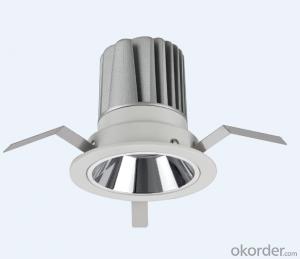Victron Easy Solar Inverter
Victron Easy Solar Inverter Related Searches
Grill With Led Light Bar Light Fixture With Chain Blu Ray Player With Recorder Blu Ray Player With Internet Steel Column Connection To Foundation Grinding Wheels Come In Grades From Coarse To Dodge Ram Led Light Bar Grill Led House Light Fixtures Small Led Light Fixtures Intellibrite Led Pool LightHot Searches
Fiberglass Scaffolding For Sale Fiberglass Panels For Sale Fiberglass Greenhouses For Sale Easy Deck Scaffold For Sale Ceiling Fan Lowest Price Geogrid Fabric Price Geogrid Fabric Home Depot Cost To Install Frp Panels Geotextile Fabric Cost Per Square Foot Geogrid Fabric Near Me Textilene Fabric Suppliers Uk Cost To Install Hardwood Floors Coal Prices 2015 Led Light Manufacturers Samsung Mobile Accessories Price List Led Headlight Manufacturers Cost To Waterproof A Basement Best Grinder To Buy Best Nuts To Buy Best Place To Buy FlashlightsVictron Easy Solar Inverter Supplier & Manufacturer from China
Okorder.com is a professional Victron Easy Solar Inverter supplier & manufacturer, offers integrated one-stop services including real-time quoting and online cargo tracking. We are funded by CNBM Group, a Fortune 500 enterprise and the largest Victron Easy Solar Inverter firm in China.Hot Products
FAQ
- A solar inverter synchronizes with the grid frequency by constantly monitoring the frequency of the utility grid. It adjusts its own output frequency accordingly to match the grid frequency. This synchronization process ensures that the solar inverter's power output is in phase with the utility grid, allowing it to seamlessly inject solar energy into the grid without any disruptions or compatibility issues.
- The role of a power quality analyzer in a solar inverter is to measure and analyze various parameters of the electric power being generated by the solar panels. It helps in monitoring the quality of the power, such as voltage levels, frequency, harmonics, and power factor, to ensure that it meets the required standards and is suitable for efficient operation of the solar inverter. By providing detailed information on the power quality, the analyzer helps in identifying any issues or anomalies in the power output and allows for necessary corrective actions to be taken, thereby optimizing the performance and reliability of the solar inverter system.
- Yes, a solar inverter can work without batteries. In a grid-tied solar system, the inverter converts the DC power generated by the solar panels into AC power, which can be used to power appliances or fed back into the utility grid. Batteries are typically used in off-grid systems to store excess energy for later use, but they are not necessary for the basic function of a solar inverter.
- The role of a display or user interface in a solar inverter is to provide real-time information and control capabilities to the user. It allows the user to monitor the performance of the solar inverter, such as the amount of power being generated, the voltage and current levels, and any error or warning messages. The display also enables the user to adjust various settings and parameters of the inverter, such as the operating mode, output voltage, or charging profiles. In essence, the display or user interface acts as a communication tool between the user and the solar inverter, facilitating efficient operation, monitoring, and troubleshooting.
- A solar inverter is a device that converts the direct current (DC) electricity generated by solar panels into alternating current (AC) electricity that can be used to power household appliances and be fed back into the grid.
- Yes, a solar inverter can be used with a remote monitoring system. In fact, many modern solar inverters are designed to be compatible with remote monitoring systems. This allows users to monitor the performance and output of their solar system from a remote location, providing real-time data on energy production, system efficiency, and any potential issues or faults. Remote monitoring systems provide convenience, enable proactive maintenance, and help optimize the overall performance of solar installations.
- A solar inverter communicates with other devices in a solar power system through various communication protocols such as Wi-Fi, Ethernet, or RS485. These protocols enable the inverter to exchange data and information with devices like solar panels, batteries, energy management systems, or monitoring devices. This communication allows for real-time monitoring, control, and optimization of the solar power system's performance.
- A solar inverter handles voltage sag and swell by utilizing its power conditioning capabilities. When it detects a voltage sag (a temporary decrease in voltage), the inverter adjusts its internal control algorithms to provide a stable and consistent output voltage to the connected loads. Similarly, in the case of voltage swell (a temporary increase in voltage), the inverter modifies its operation to prevent overvoltage conditions and ensure a safe and regulated output. Through continuous monitoring and intelligent control, a solar inverter effectively manages voltage fluctuations to maintain stable power delivery.














































